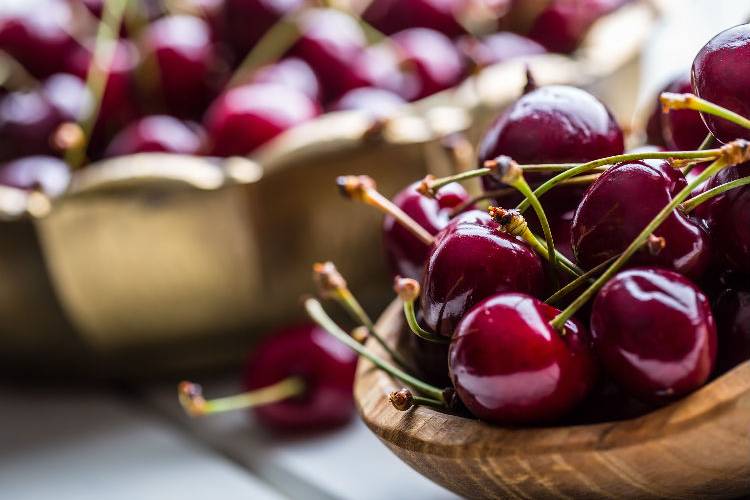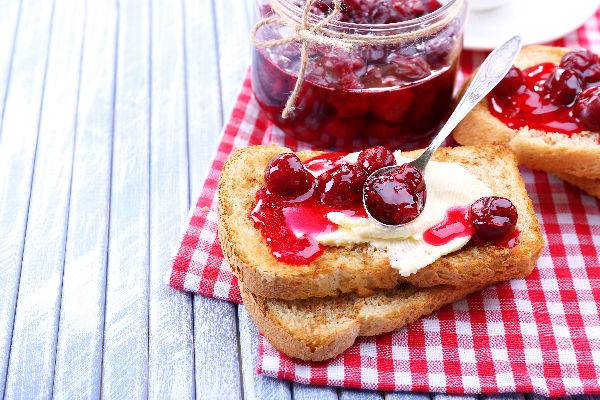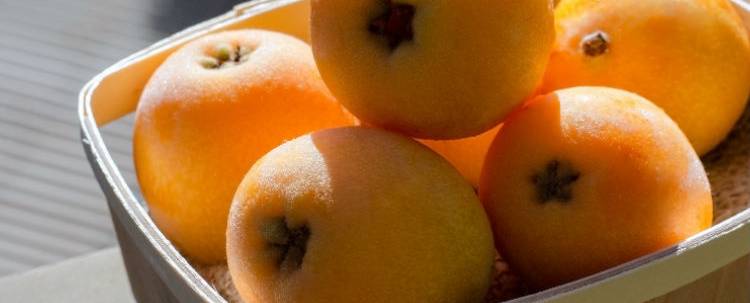The cherry
The cherry is the fruit of the cherry tree (Prunus avium), from the same plant family as the peach, apricot and plum.
fresh food
Share

The cherry is a fruit with a round appearance, and depending on the variety, is a more or less intense red, with a juicy flesh whose colour ranges from yellow to an intense garnet. Cherries have been eaten since the ancient Greek and Roman times, from where their consumption rapidly spread to Spain. Today, the cherry tree can be found in a wide variety of regions and countries with temperate or even cold climates.
There are two types of cherry tree in Europe, from which the almost 1000 varieties which exist today originated.
- The sweet cherry (Prunus avium). The most common varieties are the “ambrunesa”, “burlat” and “napoleon”. These are ideal for eating fresh or for making jams and conserves.
- Sour cherries (Prunus cerasus), these are smaller and generally used in the production of liqueurs and sauces to accompany meat dishes.
Wood from the cherry tree is very decorative and used to manufacture furniture. When first cut, the wood has a pink look but it quickly darkens, eventually assuming a reddish mahogany colour.
Each variety has its own characteristics, such as acidity, fleshiness and length of time to maturity. The main areas of production in Spain are Alicante, Castellón, Barcelona, Zaragoza, Navarra and the Jerte region (a Protected Designation of Origin) in the province of Caceres.
The majority of the fruits from the Jerte valley belong to the picota group, recognisable by their lack of a stalk, which naturally comes off during harvesting. The picota denomination encompasses the varieties known as "Ambrunes", "Pico negro", "Pico limón negro" and "Pico colorado" as well as the "Navalinda" which retains its stalk after harvesting.

How to recognise the authentic picota del Jerte:
• The area where thestalk was is not damaged.
• They are a dark red colour.
• They have the stamp of Protected Designation Origin of cherries from Jerte.
• They are smaller than normal cherries.
Because of their pleasant taste and attractive colours, cherries can be used to introduce children to the delights of fruits. They can be eaten in their natural state or incorporated into desserts such as fruit tarts, as an accompaniment to ice creams or served as jams and conserves.
In terms of nutritional value, cherries are low in calories (52kcal/100grams) and have a high fibre content, which makes them mildly laxative and good for purifying the system. They also contain small amounts of vitamins A and C.
However, the most outstanding quality of cherries is their high flavonoid content, especially anthocyanins, the pigment responsible for their red colour. This substance is mainly found in the flesh of the fruit and is an effective antioxidant, which helps delay cellular aging and the development of degenerative diseases.
How to choose and buy cherries: it's advisable to choose cherries with a dark red colour and heavy feel, with a shiny skin, and of a firm consistency with a green, fresh stalk.
It's best to eat them straight away, but if they have to be kept for a while they should be stored in the fridge, unwashed and uncovered until you're ready to serve them. They can also be preserved in syrup.

Medlar, a fruit with Designation of Origin
Read more
Medlar, a fruit with Designation of Origin






